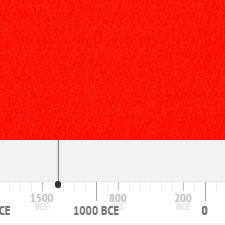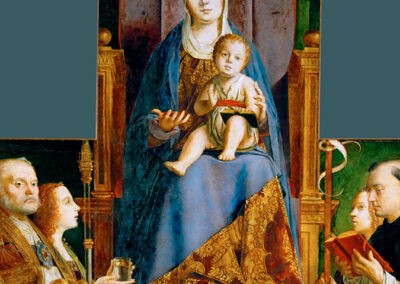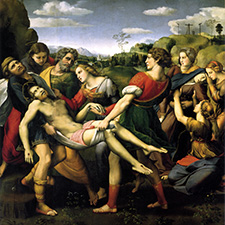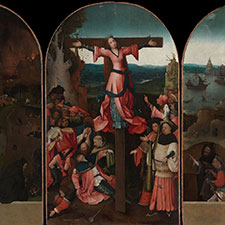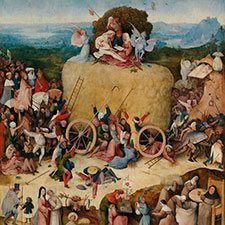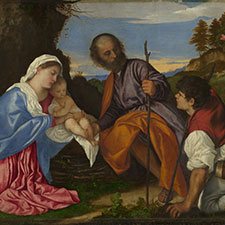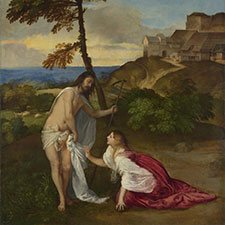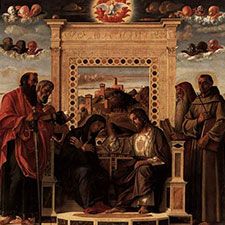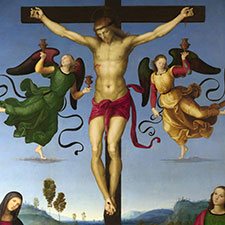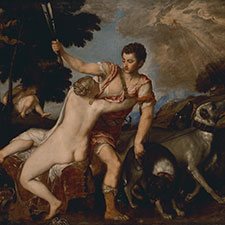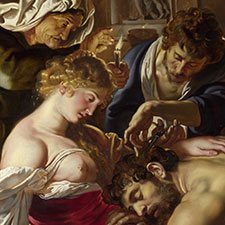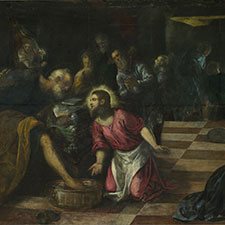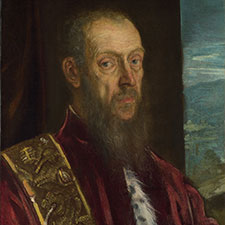Carmine Kermes
Natural organic pigmentComposition and Properties of Carmine Kermes
The name carmine is used for two similar pigments derived from different insects.
The pigment of carmine kermes is derived from a scale insect called kermes which lives as a parasite on the tree Scarlet oak. The main coloring agent, in this case, is kermesic acid.
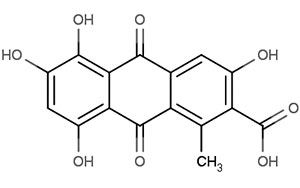
The pigment is not very stable unless it is stored in a dry place and is not lightfast and fades even under incandescent illumination. It cannot be used in acidic and alkaline conditions.
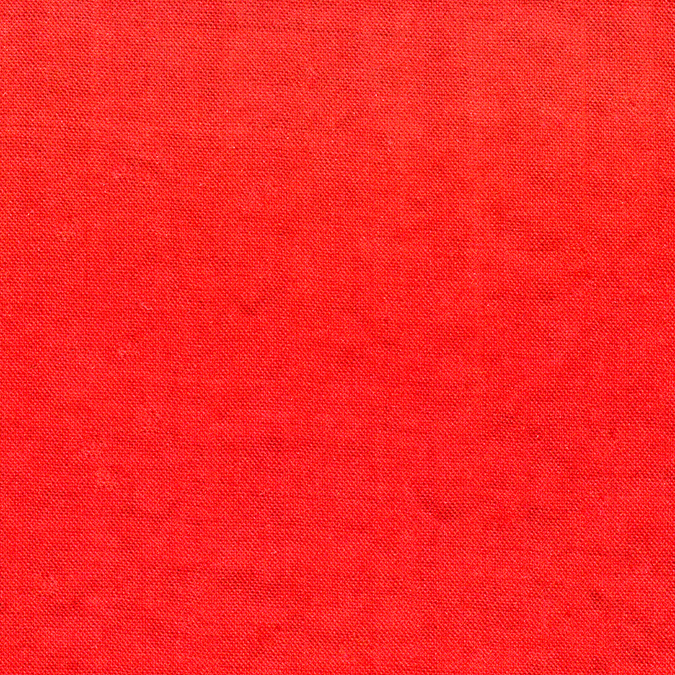
Wool dyed with kermes
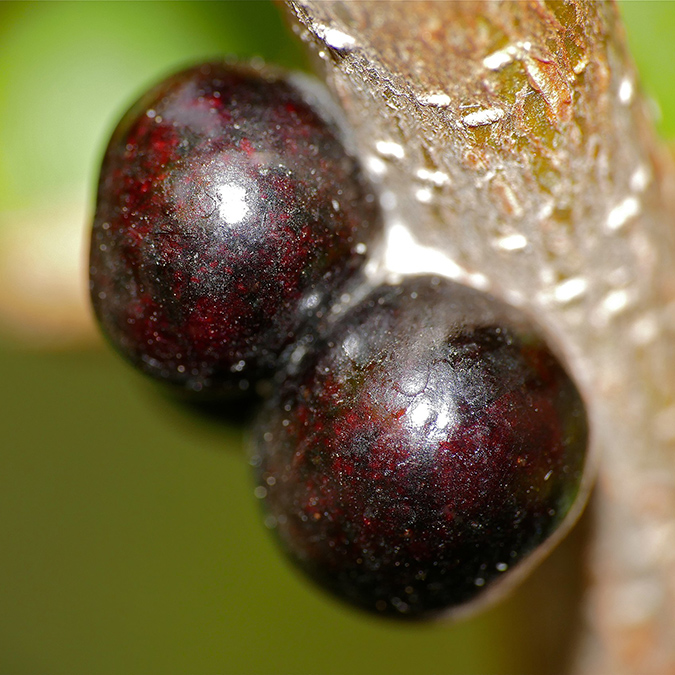
Kermes scale insects
Names
Alternative names
Kermes
Color Index
Kermes: Natural red 3 (NR 3), C.I. 75460
Word origin
Kermes: from Medieval Latin cremesinus, from Arabic qirmiz “kermes,” from Sanskrit krmi-ja a compound meaning “(red dye) produced by a worm.”
From Online Etymology Dictionary
Karmin Kermes
German
Carmin kermès
French
Carminio chermes
Italian
Carmín quermes
Spanish
Preparation of Carmine Kermes
The preparation of carmine kermes consists of two steps. The dried insects are first boiled in water in order to extract the kermesic acid. The second step is the precipitation of the pigment by adding alum to the clear filtered solution. Aluminum ions contained in alum form a complex salt of the intense crimson-red colour.
References
(1) Kirby, J., Spring, M., Higgitt, C. ‘The Technology of Red Lake Pigment Manufacture: Study of the Dyestuff Substrate‘. National Gallery Technical Bulletin Vol 26, pp 71–87. Available as pdf.
(2) J. Kirby, M. Spring and C. Higgitt, The Technology of Eighteenth- and Nineteenth-Century Red Lake Pigments, National Gallery Technical Bulletin, Vol 28, 2007.
History of Use of Carmine Kermes
Carmine Kermes is mentioned in the Old Testament and has been used as a pigment since ancient times. The scientists of the National Gallery London investigated paintings in their gallery and found carmine in many of them (2).
References
(1) Jo Kirby and Raymond White, The Identification of Red Lake Pigment Dyestuffs and a Discussion of their Use. National Gallery Technical Bulletin, Vol 17, 1996, pp. 56-80. Available as pdf.
Examples of use
Titian, ‘Noli me Tangere‘, ca 1514
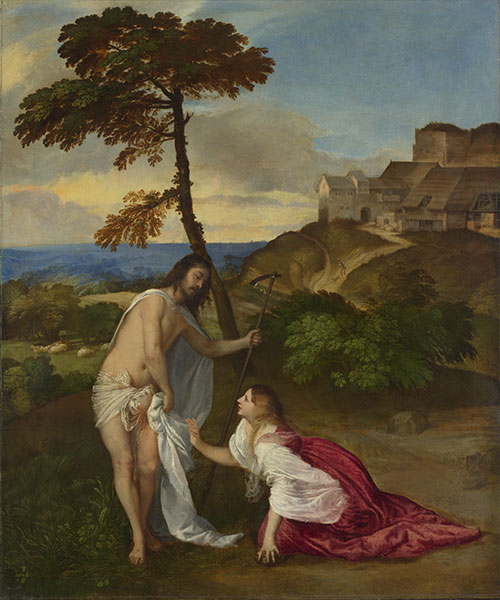
4 Magdalen’s red dress: underpaint based on carmine lake (kermes) and lead white glazed with a rather thick glaze of carmine lake and small amounts of madder lake.
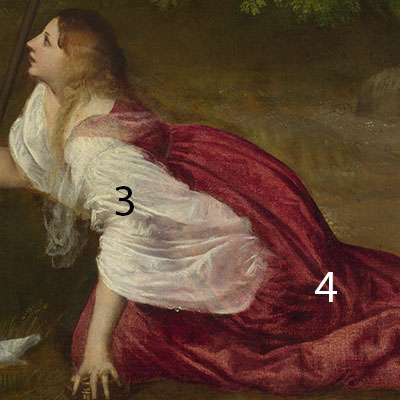
Peter Paul Rubens, Samson and Delilah, 1609
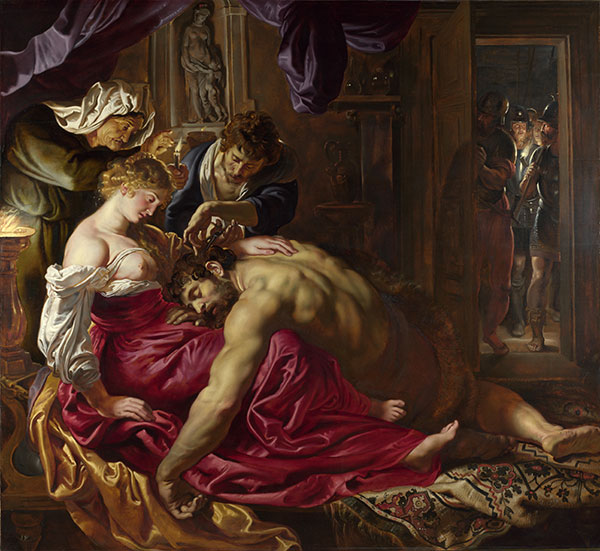
2 Delilah’s crimson satin robe: The main pigment in this masterful rendering of drapery is carmine from kermes insects. In the middle tones, carmine is mixed with vermilion. Strong highlights are painted in lead white and overglazed with a carmine lake. An orange-yellow pigment is incorporated into the paint layer of the satin dress in the warm yellowish area under Delilah’s breasts where the candlelight is reflected.
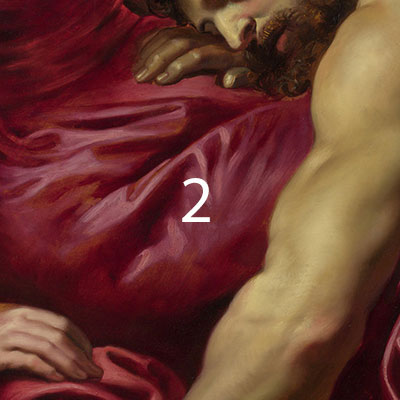
Identification of Carmine Kermes
Fiber optics reflectance spectra (FORS)
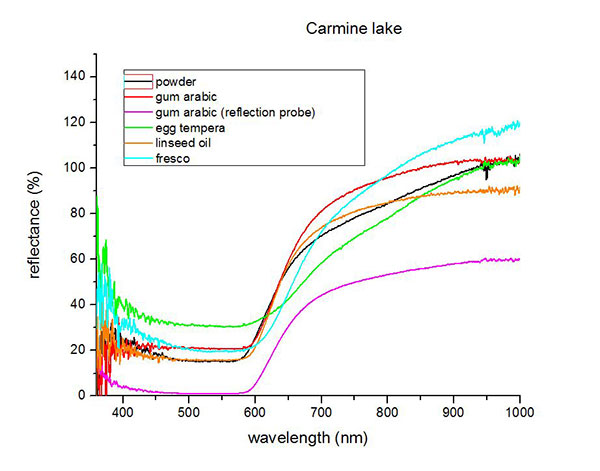
Spectra by A. Cosentino, Cultural Heritage Science Open Source (CHSOS)
Raman Spectrum
Raman Spectrum in: Ref (4), p. 15
X-Ray Fluorescence Spektrum (XRF)
XRF Spectrum in the Free XRF Spectroscopy Database of Pigments Checker, CHSOS website.
References
(1) Christina Bisulca, Marcello Picollo, Mauro Bacci, Diane Kunzelman, UV-VIS-NIR Reflectance Spectroscopy
of Red Lakes In Paintings, 9th International Conference on NDT of Art, Jerusalem Israel, 25-30 May 2008. Available as pdf.
(2) Whitney, A. V., et al. An innovative surface-enhanced Raman spectroscopy (SERS) method for the identification of six historical red lakes and dyestuffs. Journal of Raman Spectroscopy 37(10), 2006, 993–1002. Available as pdf.
(3) J. Kirby and R. White, The Identification of Red Lake Pigment Dyestuffs and a Discussion of their Use, National Gallery Technical Bulletin, Vol. 17, (1996), pp. 56-80. Available as pdf.
(4) Catherine M. Schmidt, Karen A. Trentelman, 1064 nm Dispersive Raman Micro-Spectroscopy For the In-situ Identification of Organic Red Colorants, e-Preservation Science, e-PS, 2009, 6, 10-21. Available as pdf.
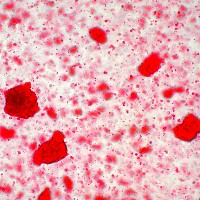
Microphotograph
image © Volker Emrath
Further Reading
References
(1) Schweppe, H. and Roosen-Runge, H. Carmine – Cochineal Carmine and Kermes Carmine, in Artists’ Pigments. A Handbook of Their History and Characteristics, Vol. 1: Feller, R.L. (Ed.) Oxford University Press 1986, p. 255 – 298. Available as pdf from the National Gallery of Art.
(2) J. Kirby, M. Spring and C. Higgitt, The Technology of Eighteenth- and Nineteenth-Century Red Lake Pigments, National Gallery Technical Bulletin, Vol 28, 2007.
(3) Jo Kirby and Raymond White, The Identification of Red Lake Pigment Dyestuffs and a Discussion of their Use. National Gallery Technical Bulletin, Vol 17, 1996, pp. 56-80. Available as pdf.
(4) Kirby, J., Spring, M., Higgitt, C. ‘The Technology of Red Lake Pigment Manufacture: Study of the Dyestuff Substrate‘. National Gallery Technical Bulletin Vol 26, pp 71–87. Available as pdf.
(5) S. Muntwyler, J. Lipscher, HP. Schneider, Das Farbenbuch, 2nd. Ed., 2023, alataverlag Elsau, pp. 138-139 and 356-359.

